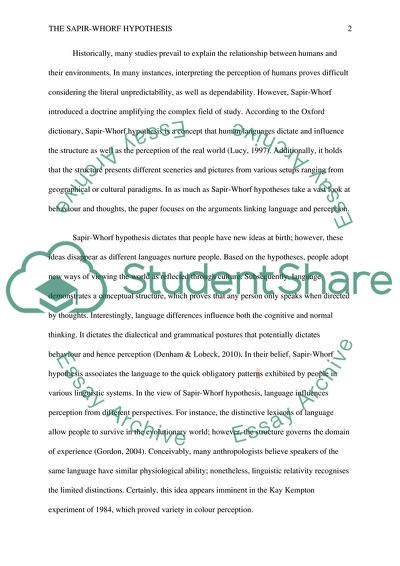Cite this document
(The Sapir-Whorf Hypothesis Essay Example | Topics and Well Written Essays - 2000 words, n.d.)
The Sapir-Whorf Hypothesis Essay Example | Topics and Well Written Essays - 2000 words. https://studentshare.org/humanitarian/1856010-the-sapir-whorf-hypothesis-argues-for-a-strong-link-between-language-and-perception-of-world-outline-the-arguments-for-and-against
The Sapir-Whorf Hypothesis Essay Example | Topics and Well Written Essays - 2000 words. https://studentshare.org/humanitarian/1856010-the-sapir-whorf-hypothesis-argues-for-a-strong-link-between-language-and-perception-of-world-outline-the-arguments-for-and-against
(The Sapir-Whorf Hypothesis Essay Example | Topics and Well Written Essays - 2000 Words)
The Sapir-Whorf Hypothesis Essay Example | Topics and Well Written Essays - 2000 Words. https://studentshare.org/humanitarian/1856010-the-sapir-whorf-hypothesis-argues-for-a-strong-link-between-language-and-perception-of-world-outline-the-arguments-for-and-against.
The Sapir-Whorf Hypothesis Essay Example | Topics and Well Written Essays - 2000 Words. https://studentshare.org/humanitarian/1856010-the-sapir-whorf-hypothesis-argues-for-a-strong-link-between-language-and-perception-of-world-outline-the-arguments-for-and-against.
“The Sapir-Whorf Hypothesis Essay Example | Topics and Well Written Essays - 2000 Words”. https://studentshare.org/humanitarian/1856010-the-sapir-whorf-hypothesis-argues-for-a-strong-link-between-language-and-perception-of-world-outline-the-arguments-for-and-against.


